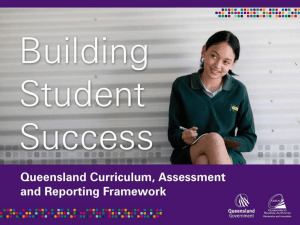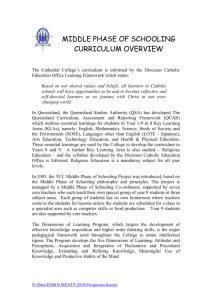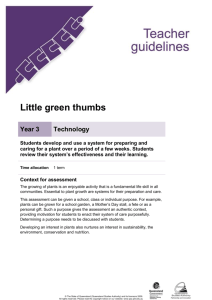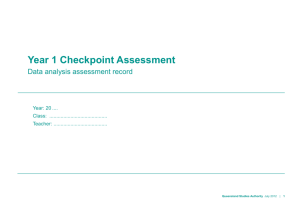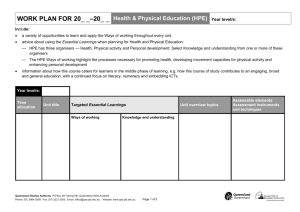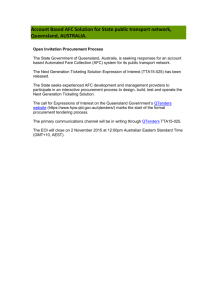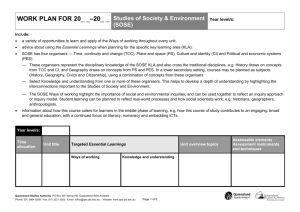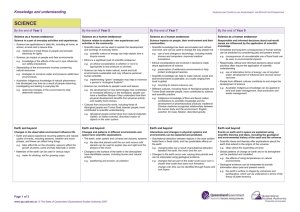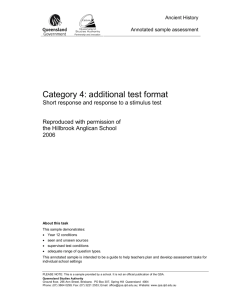Unit planning checklist - Queensland Curriculum and Assessment
advertisement
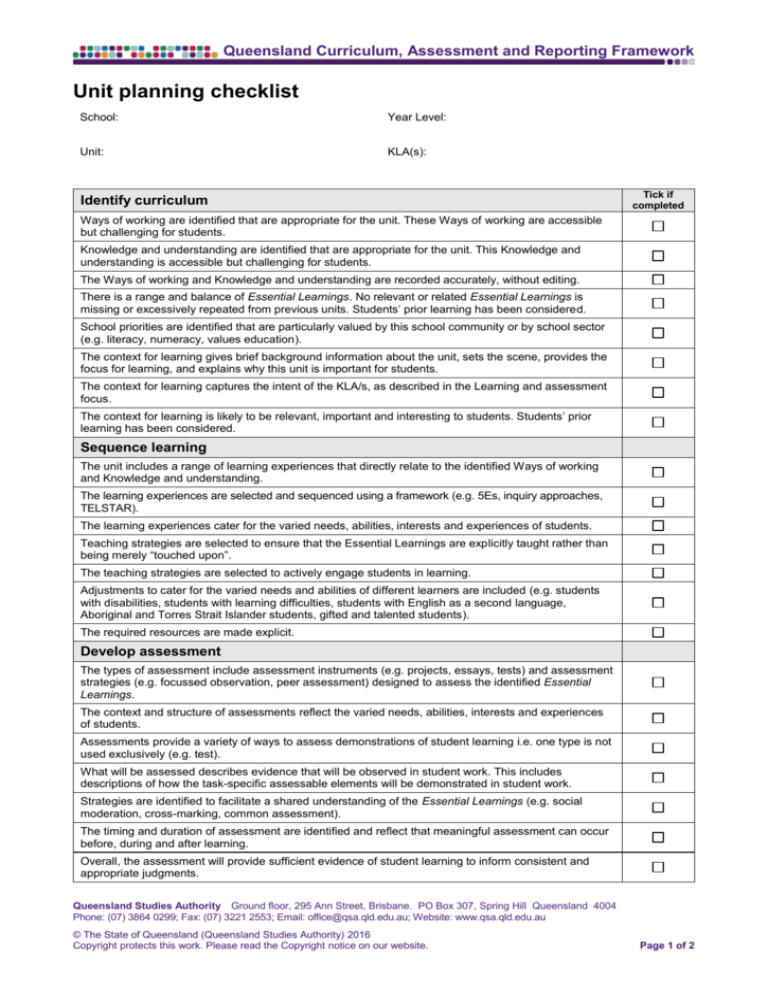
Queensland Curriculum, Assessment and Reporting Framework Unit planning checklist School: Year Level: Unit: KLA(s): Identify curriculum Tick if completed Ways of working are identified that are appropriate for the unit. These Ways of working are accessible but challenging for students. Knowledge and understanding are identified that are appropriate for the unit. This Knowledge and understanding is accessible but challenging for students. The Ways of working and Knowledge and understanding are recorded accurately, without editing. There is a range and balance of Essential Learnings. No relevant or related Essential Learnings is missing or excessively repeated from previous units. Students’ prior learning has been considered. School priorities are identified that are particularly valued by this school community or by school sector (e.g. literacy, numeracy, values education). The context for learning gives brief background information about the unit, sets the scene, provides the focus for learning, and explains why this unit is important for students. The context for learning captures the intent of the KLA/s, as described in the Learning and assessment focus. The context for learning is likely to be relevant, important and interesting to students. Students’ prior learning has been considered. Sequence learning The unit includes a range of learning experiences that directly relate to the identified Ways of working and Knowledge and understanding. The learning experiences are selected and sequenced using a framework (e.g. 5Es, inquiry approaches, TELSTAR). The learning experiences cater for the varied needs, abilities, interests and experiences of students. Teaching strategies are selected to ensure that the Essential Learnings are explicitly taught rather than being merely “touched upon”. The teaching strategies are selected to actively engage students in learning. Adjustments to cater for the varied needs and abilities of different learners are included (e.g. students with disabilities, students with learning difficulties, students with English as a second language, Aboriginal and Torres Strait Islander students, gifted and talented students). The required resources are made explicit. Develop assessment The types of assessment include assessment instruments (e.g. projects, essays, tests) and assessment strategies (e.g. focussed observation, peer assessment) designed to assess the identified Essential Learnings. The context and structure of assessments reflect the varied needs, abilities, interests and experiences of students. Assessments provide a variety of ways to assess demonstrations of student learning i.e. one type is not used exclusively (e.g. test). What will be assessed describes evidence that will be observed in student work. This includes descriptions of how the task-specific assessable elements will be demonstrated in student work. Strategies are identified to facilitate a shared understanding of the Essential Learnings (e.g. social moderation, cross-marking, common assessment). The timing and duration of assessment are identified and reflect that meaningful assessment can occur before, during and after learning. Overall, the assessment will provide sufficient evidence of student learning to inform consistent and appropriate judgments. Queensland Studies Authority Ground floor, 295 Ann Street, Brisbane. PO Box 307, Spring Hill Queensland 4004 Phone: (07) 3864 0299; Fax: (07) 3221 2553; Email: office@qsa.qld.edu.au; Website: www.qsa.qld.edu.au © The State of Queensland (Queensland Studies Authority) 2016 Copyright protects this work. Please read the Copyright notice on our website. Page 1 of 2 Queensland Curriculum, Assessment and Reporting Framework Make judgments The purpose for assessment is identified (e.g. diagnostic, assessment for learning, formative, summative). Task-specific assessable elements have been identified for assessment that align with the Assessable elements of the relevant key learning area/s. The assessment conditions are varied enough to produce meaningful information about student learning in a variety of contexts. When applicable, task-specific descriptors of quality are identified. These include statements of desirable features in student work or the conditions (e.g. length, scope, access to resources) under which assessment will occur. Use feedback Strategies are explicitly identified to show how and when to provide feedback to students. These include formal teacher feedback (e.g. report cards, grades), informal teacher feedback (e.g. annotated work, one-on-one conferencing), and feedback from others (e.g. peer evaluation, self reflection). The student feedback strategies will enable all students to reflect on the strengths and weaknesses of their work. The selected feedback processes are frequent, continuous and educative. At the end of the unit, teachers identify what worked well. This is an opportunity to self-reflect and to improve student learning. There are processes for planning flexibly in response to student assessment evidence. Overall considerations The unit meets the needs of students, teachers and the school community. Alignment has been achieved — i.e. there is a clear and explicit link between what is intended (Essential Learnings), what will be taught (learning experiences and teaching strategies), what will be assessed (Assessable elements) and how it will be assessed (using the Standards). Reporting processes align with planning, teaching and assessing. Overall, the unit reflects considerations of equity, inclusiveness and relevance. Comments or ideas Queensland Studies Authority Ground floor, 295 Ann Street, Brisbane. PO Box 307, Spring Hill Queensland 4004 Phone: (07) 3864 0299; Fax: (07) 3221 2553; Email: office@qsa.qld.edu.au; Website: www.qsa.qld.edu.au © The State of Queensland (Queensland Studies Authority) 2016 Copyright protects this work. Please read the Copyright notice on our website. Page 2 of 2
